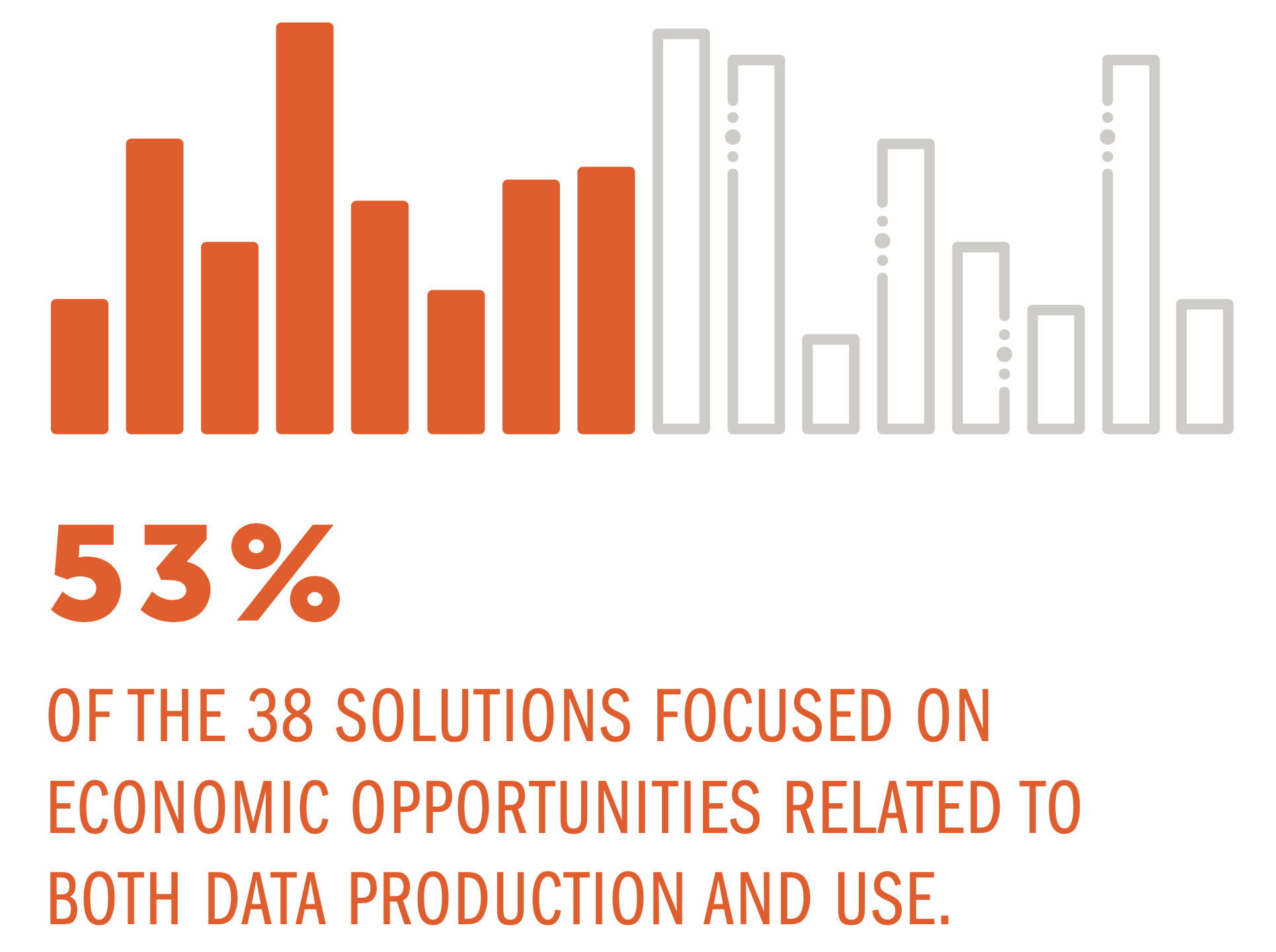
Integration of Gender-Relevant Modules in Existing Household Surveys Is Needed
Sex-disaggregated data on asset ownership, and access to information and communication technology (ICT) are needed to understand women’s economic agency and involvement in household decision-making. Yet, because of capacity constraints, ministries of labor or governmental ICT authorities may not collect gender-relevant data on a frequent basis. Below we outline two solutions to produce more complete data on asset ownership for women and girls.

Highlighting The Solutions
Integrating meaningful connectivity module into household surveys
In an increasingly digitized world, inequitable access to the internet can have spillover effects by preventing women from accessing financial technology and services. A report from the Alliance for Affordable Internet proposes a new target for meaningful connectivity that sets thresholds for regular internet use with an appropriate device and data download capacity using a fast connection. The meaningful connectivity module is versatile, allowing analysis of internet use by gender to assess the digital gender gap that goes beyond conventional measures of internet usage. This proposed measure provides a sample module that can be integrated into household surveys.
Integrating modules on asset ownership into household surveys
The United Nations Statistics Division’s “Guidelines for Producing Statistics on Asset Ownership from a Gender Perspective” includes sample modules on asset ownership for national statistical offices and other relevant actors to integrate into recurring household surveys. The guidelines conceptualize asset ownership—such as the ownership of land or property—as documented ownership, reported ownership, right to sell, and the right to bequeath. The modules support gender analysis of asset ownership to encourage policymakers to address women’s economic empowerment, poverty reduction, and to further understand women’s livelihoods.
In an increasingly digitized world, inequitable access to the internet can have spillover effects by preventing women from accessing financial technology and services.
Other economic opportunity solutions and findings
Of 142 solutions found in the inventory, 38 solutions are relevant to economic opportunity, 23 of which solely focus on economic opportunity while the remaining 15 also cover other themes. Of these 38 solutions, about 53 percent focus on both data production and use. The remaining mostly focus on data production. Other economic opportunity solutions in the inventory include:
- Harmonization of labor force surveys and multitopic household surveys to ensure the consistency of measuring men and women’s work
- The role of partnerships in encouraging gender data collection and production on women’s work and employment
- Oxfam’s Household Care Survey Toolkit to gather data on factors associated with unpaid care tasks
- The rapid assessment instrument of the UN Expert Group on Innovative and Effective Ways to Collect Time-Use Statistics’ to collect time use data during crises
What Will It Take to Scale Up Economic Opportunity Solutions?
Targeted technical assistance for capacity building on household surveys and partnerships are key.
Civil society groups and inter-governmental organizations will need to provide technical assistance to national statistical offices to integrate household modules on meaningful connectivity and on asset ownership into existing household surveys. Integrating too many modules could create a time burden for surveyors and interviewees; therefore, national statistical offices should be selective in integrating household modules that reflect national needs and priorities.

How Will Applying These Solutions Impact Gender Data?
Solutions in this domain could increase production of gender data on economic empowerment, financial inclusion, information and communications technology, and work, including unpaid housework and care work, time use, and employment. Solutions that address asset ownership complement efforts to track Target 5.a of the SDGs on equal access to economic resources, including land. Solutions that address gender-equal access on information and communications technology address Target 9.c of the SDGs. The remaining solutions address SDG 8 (decent work and economic growth), particularly on Targets 8.5 (full and productive employment), 8.7 (child labor), and 8.10 (financial institutions).
To access a full list of sources for the above, click here. To view the entire report, follow this link.
Focus on Women's Economic Empowerment
Economic empowerment is multidimensional. Measuring it, or even facets of it, is challenging. Improving the measurement of women’s economic empowerment by bringing clarity, quality, and comparability to existing and emerging measures, is a significant step in understanding and ultimately improving women’s economic opportunities.

